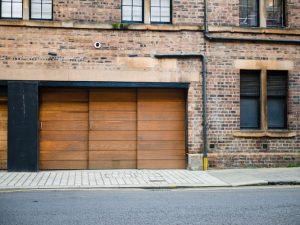Listed buildings can be a beautiful fairytale dream. But listed building insurance can seem a villainous nightmare.
Are you tired of searching? Or fearing rejection after going through a lengthy quote process? Is there always something where you just can’t quite get the cover
At Emerald Life we can easily provide listed building insurance for Grades II and II* – or B and C in Scotland – through our fast online quote form.
A listed building insurance policy includes cover for the physical structure of the building but can also include contents cover for items you own as well as public liability insurance.
If you require insurance for a Grade I listed building we may be able to provide cover if we take your details and escalate your case to our underwriters. But we specialise in non-standard insurance, so if we can cover you we will do.
If that is you then emailing us is probably the fastest way to find out if we can provide cover and how much it would cost.
What Does Insurance Cost On A Grade 2 Listed Building?
A Grade 2 listed building insurance policy is likely to cost slightly more than the same policy for a property that isn’t listed, because often the rebuild value is higher, be that because of the materials used or the specialist building expertise that may be required. However, other factors will also affect the premium such as your location and claims history.
In England and Wales listed buildings have three grades: Grade II for buildings of special interest, Grade II* for buildings with more than special interest, and Grade I for those of exceptional interest, with corresponding letters in Scotland.
Properties built before 1700 are usually automatically listed, and those built from 1700 to 1840 are likely to be listed.
According to records held by Historic England 91.7% of all listed buildings are Grade II. If you are unsure you can check your property with Historic England and find its grade.
A higher grade means a higher level of restrictions which include the repair and maintenance of the building.
This is where listed building home insurance gets more expensive. Listed buildings require specialist knowledge and materials in order to repair.
If you damage a listed building then you are required by law to repair it with skills and materials that match the original.
Therefore in the event of damage and a claim, the insurer is likely to have to pay out more than for a similar claim with a non-listed building.
Then there are other pricing factors:
Postcode – your location will say a lot about crime rates, flood and subsidence risk. Insurers often use postcode ratings that can be quite old so this is one reason it is worth shopping around.
Usage – if the propery is unoccupied or let out then these will have a higher premium than if it is your main residence.
Size – this will be linked to your rebuild value but in general bigger buildings will cost more to cover. There’s more chance of something going wrong somewhere and a higher potential rebuild cost.
Your circumstances – Insurers do take a lot of your details into account such as marital status and claims history. Your job may also affect when the home is occupied.
What Do You Need To Get A Listed Building Home Insurance Quote?
In order to get an accurate quote, you can go through our online quote form and answer all the questions truthfully.
In particular you will need the date your home was built and the rebuild cost.
Finding out when your house was built can be difficult – but insurers nearly always work in bands and so an approximation is fine. At Emerald Life we have different pricing for pre-1800 and post-1800 properties so if you are close to this boundary it might be wise to get an accurate figure.
Your rebuild cost should reflect the amount it would cost to rebuild the property if it were totally destroyed. That is not the same as the market value – because you already own the land and the rebuild cost is more about materials and labour rather than how popular your neighbourhood is.
With listed buildings, the rebuild cost can actually be higher than the market value owing to the skills and materials required.



